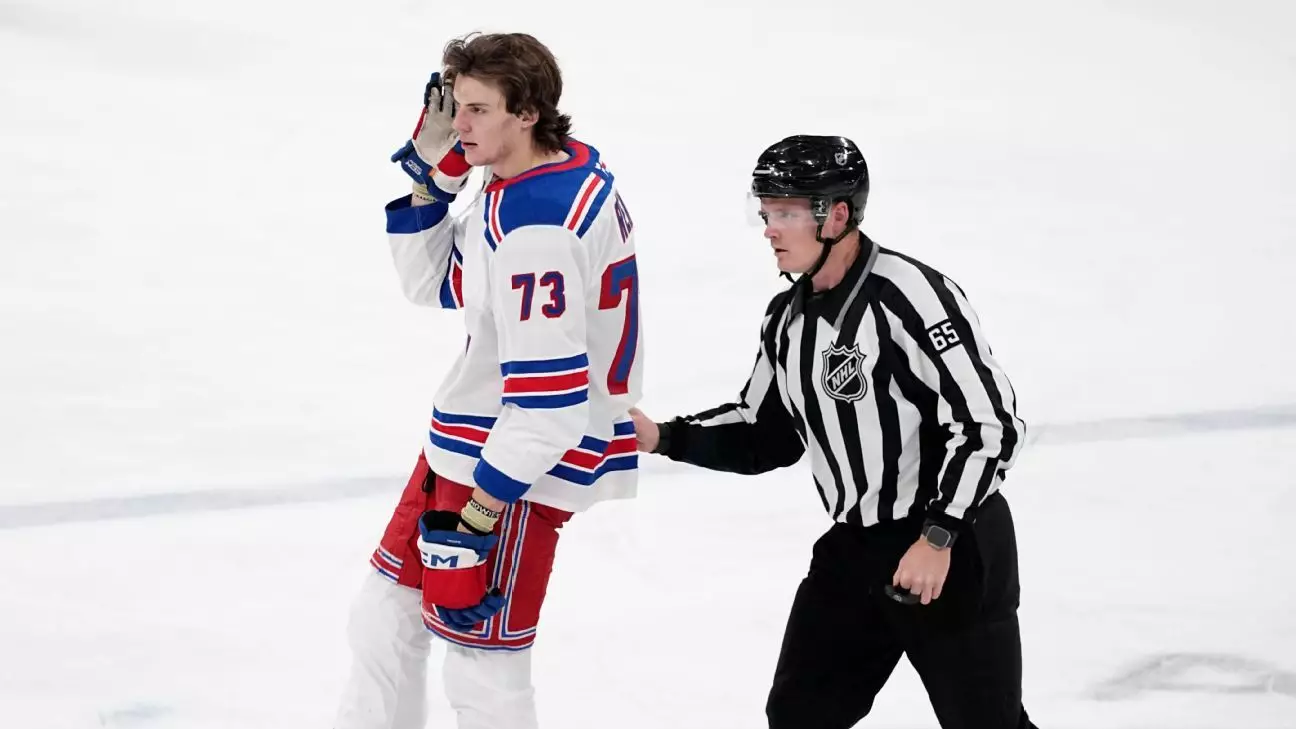The world of professional hockey is not just about skill and finesse; it also entails a physicality that can sometimes veer into dangerous territory. One such instance recently occurred involving New York Rangers forward Matt Rempe, who faced an eight-game suspension for a reckless hit on Dallas Stars defenseman Miro Heiskanen. This incident is more than a mere infraction; it represents a troubling narrative of repeat offenses in the NHL and how such acts can resonate beyond the ice rink.
On a night that began with high hopes for the Rangers, Rempe’s hit, which took place in the third period of the game against Dallas, spiraled into controversy. Approaching Heiskanen, who was focused on the puck with his back turned, Rempe executed a hit that was deemed a violation of multiple NHL rules. The reactions from players, coaches, and officials highlight the importance of player safety standards in the NHL, especially in light of recent discussions around the dangers of head injuries.
The NHL’s Department of Player Safety noted that Rempe was a “repeat offender,” a term that carries significant weight under the league’s collective bargaining agreement. His previous suspension—one that sidelined him for four games last season—was due to a similar reckless act involving elbowing another player, New Jersey Devils defenseman Jonas Siegenthaler. The gravity of his actions is underscored by the substantial financial implications as well; with an average annual salary leading to an $80,000 forfeiture, it becomes clear that reckless play not only risks players’ health but also their financial standing.
The ability to appeal the suspension presents a fascinating aspect of league regulations. Rempe can challenge the decision through NHL Commissioner Gary Bettman or escalate the matter to a neutral arbitrator due to the length of the suspension. This procedure reflects the complicated nature of discipline in professional sports and raises questions about accountability—something that players, teams, and the league must navigate carefully.
The NHL’s ruling emphasized how Rempe had a clear view of Heiskanen’s back before making the hit, suggesting that he should have adjusted his approach in order to prioritize safety. The statement from the league indicated that Rempe’s actions—“exploding upwards” into the check—highlighted a blatant disregard for Heiskanen’s defenseless position. This incident serves as a critical reminder of the ongoing conversation regarding the safety measures in place in a sport known for its aggressive physicality.
As the league grapples with issues of player safety, the cases of players like Rempe serve as a microcosm for broader trends within professional hockey. The NHL has tightened its stance on these violations over the years, striving to protect players from long-term injuries like concussions. The enforcement of stringent penalties aims to deter such conduct, yet incidents continue to arise, prompting a continuous reevaluation of safety protocols.
Rangers’ head coach, Peter Laviolette, underscored the duality of Rempe’s performance—while he was making a discernible impact in the game, the reckless play ultimately detracted from his contributions. Laviolette emphasized the need for Rempe to channel his energy into legally approved physicality rather than risking the team’s performance with penalties, revealing the delicate balance players must strike between aggression and control.
This incident not only affects Rempe’s career trajectory but could also influence the dynamics of the Rangers as they navigate the rest of the season without him. Team camaraderie is built on mutual respect, and repeated suspensions can fracture this bond, potentially stalling momentum as the team strives for success.
Matt Rempe’s suspension serves as a cautionary tale in the high-stakes world of professional hockey. It is a reflection of the ongoing struggle between maintaining a physical game and ensuring player safety—an issue that remains at the forefront of the NHL. The path forward requires constant vigilance from players, coaches, and officials alike to promote a safer playing environment while retaining the intrinsic excitement of the sport.


Leave a Reply